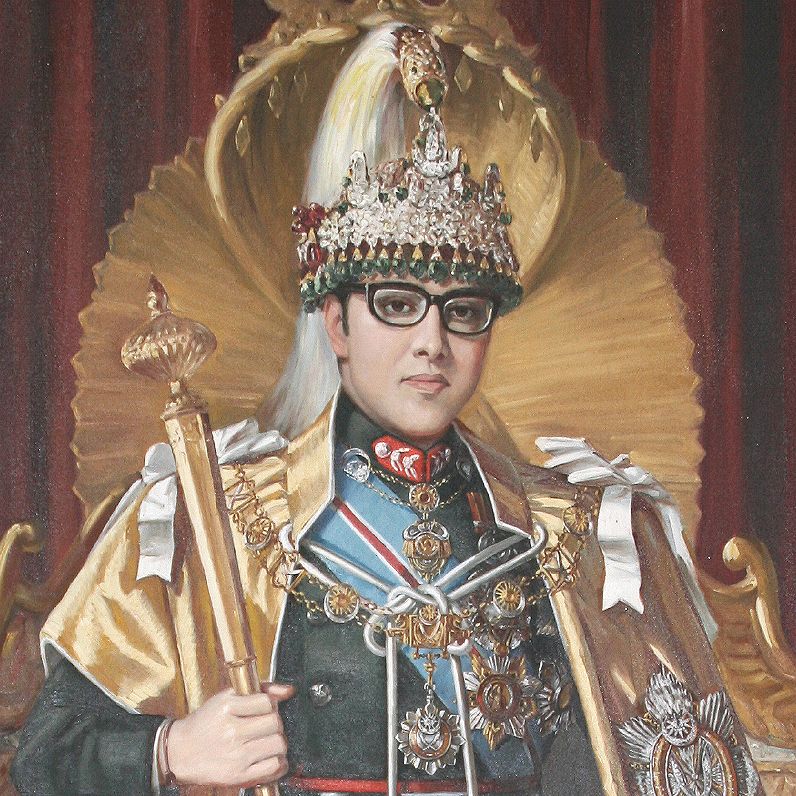
King Birendra of Nepal (Birendra Bir Bikram Jang Bahadur Shah) was born on December 28, 1945 in Kathmandu, Nepal. He was the 10th king of the Shah Dynasty and reigned from January 31, 1972 to June 1, 2001. His father is King Mahendra of Nepal, his mother is Princess Indra, the daughter of Kumar Hari Samser Jang Bahadur Rana. Birendra was educated at St. Joseph's College, Darjeeling and Eton College, England. He later continued his studies at Tokyo University and Harvard University. After his father's death, he ascended the throne in 1972, and was crowned king in Kathmandu in 1975. As a sole ruler, he had absolute power, as the parliament did not function and political parties were prohibited. During the Cold War, he managed to preserve Nepal's independence, despite attempts by neighboring China, India and the Soviet Union to interfere in the country's internal affairs. In 1990, he provided a new constitution for the his people, allowing for multi-party democracy and separation of powers. Unfortunately, a tragic fate awaited him: on June 1, 2001, the heir to the throne, Dipendra, staged a bloodbath in his family during a banquet when his parents did not allow him to marry his girlfriend . During the massacre, King Birendra, the Queen and the children of the royal couple also lost their lives. And Dipendra, who then rose from heir to the throne to king, committed suicide, fell into a coma, and died three days later. The royal seat was then occupied by King Birendra's older brother, Dnyánendra, who, in the eyes of the people, was the intellectual author and beneficiary of the blood bath.
King Birendra ascended the throne in Nepal in 1972 and ruled for 30 years. During this time, there were many changes in the Nepali coinage. In the early years, the coins were still made in the traditional Nepalese style, made of gold, silver and copper. The coins featured the king's portrait as well as Nepali religious and cultural symbols. In the 1980s, more modern elements began to appear in the coinage. The size and weight of the coins became smaller, and in addition to the portrait of the king, other motifs appeared, such as Nepalese landscapes, plants and animals. In the 1990s, with the development of Nepal's democracy, changes were also made in the coinage. Instead of the king's portrait, the Nepali coat of arms was placed on the coins, and the national symbols of Nepal also appeared on the back of the coins. During the reign of King Birendra, many new types of coins appeared in the Nepali mint. These included, for example, tourist coins depicting popular tourist destinations in Nepal. King Birendra died in tragic circumstances in 2001, and Nepalese coinage changed again. After the king's death, the national flag of Nepal and the portrait of the royal heir appeared on the back of the coins.
Numismatics. Online store for old money, coins and banknotes.